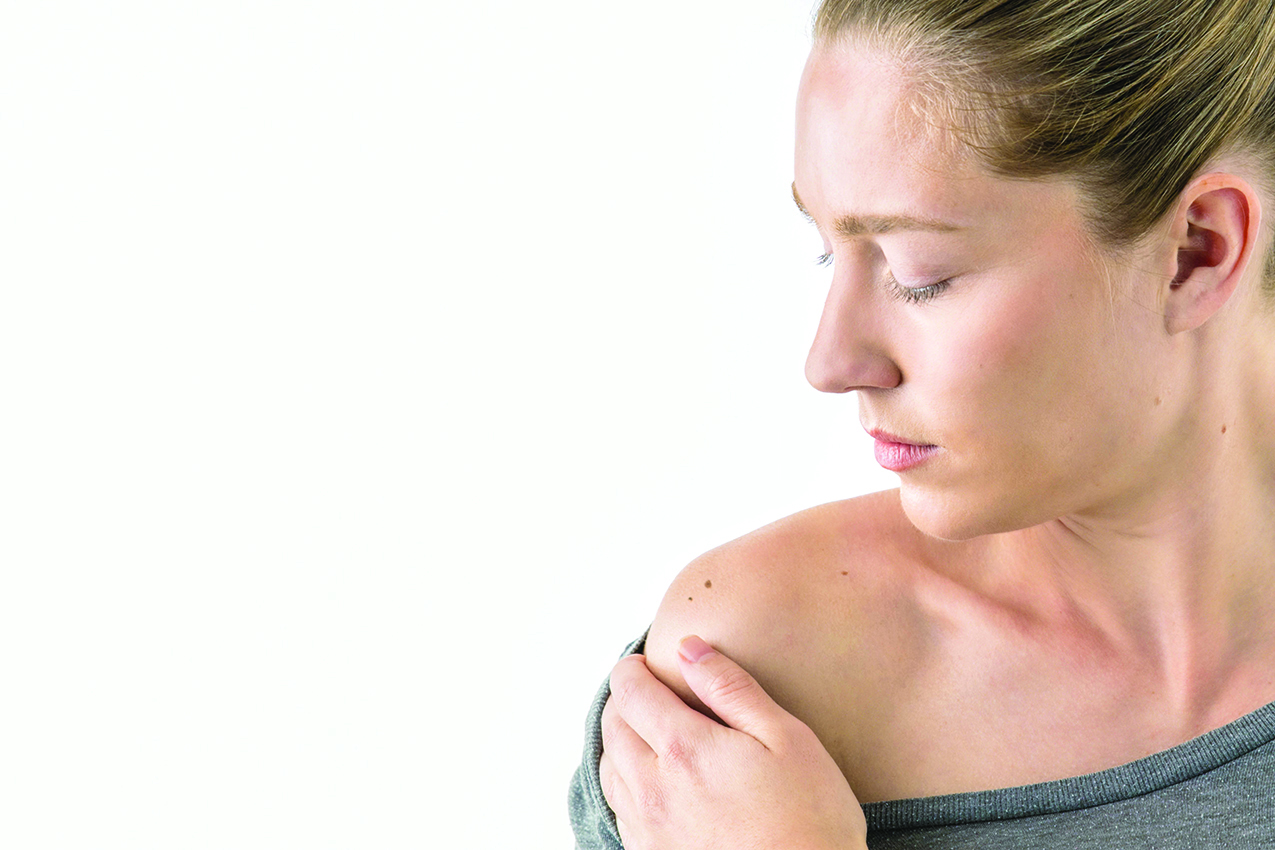HEALTHY LIVING
11 Hair Mistakes You’re Making That May Be Ruining Your Luscious Locks

I remember the day I killed my hair. I had just finished an at-home straightening treatment that reeked of rotten eggs, and I was trying to style my new coif. But my locks were oddly limp and lifeless, the bangs clingy to my forehead. I reached up and pulled at some of the strands around my face, only to have them break off in my hand. This is just one example of the many hair mistakes I’ve made in my life.
Over the years, I’ve done some major damage to my hair. I’ve bleached it, dyed it, straightened it. I even shaved it on the aforementioned day when my hair died. I got a lot of props for being bold and confident – basically a Puerto Rican Sinead O’Connor without a ripped-up picture of the Pope – but the truth was that I had pushed my poor follicles to their limit. But even without the constant coloring and heating, there are plenty of ways women ruin their hair. From daily rituals to one-time occurrences, here are all the ways you’re ruining your hair – and how to turn things around and make your hair the healthiest it’s ever been.
1)You Shampoo Too Much

I frequently fall prey to this one, as I live in New York City and feel the need to wash my hair every time I ride the subway. But the experts seem to agree that no matter what type of hair you have (or how often you use public restrooms) washing your hair every day is detrimental to maintaining healthy, shiny locks because it strips your mane of necessary oils. Jill Soller-Mihlek, a hairstylist at Dvir Salon (which has locations in both Brooklyn and Manhattan), recommends washing “only every second or third day, or alternate with a conditioner-only wash.”
2)You Use Crappy Shampoo

I used to pride myself on paying the least amount of money possible for a shampoo that smelled like coconuts. But I noticed that my hair wasn’t too happy with this money-saving decision. Although shampoo doesn’t have to be expensive to work well, it needs to contain the right ingredients. “Many shampoos contain harsh detergents like sodium lauryl sulfate that can dry out your hair,” says Soller-Mihlek, who suggests switching to a sulfate-free shampoo.
Try: Oribe Hair Care Signature Shampoo, $39, Amazon
3)You Use the Wrong Shampoo

Who knew that there was so much you could be doing wrong with your shampoo? But it’s true, it’s not just about shampooing less frequently or using a sulfate-free shampoo. Take note of your hair type or coloring proclivities and go from there. “Some shampoos can wreak havoc on colored hair, so it’s important to use one formulated for color-treated hair if you color your hair,” says Soller-Mihlek. “If your hair is very oily and lacks volume, you probably don’t want a shampoo with heavy moisturizers, just as if your hair is on the frizzy or poofy side, you wouldn’t want to use a volumizing one.”
Try: Biolage Colorlast Shampoo & Conditioner Duo, $36.50, Amazon
4)You Condition Wrong

Slathering on conditioner can result in a false sense of hair security, what with that silky, soft feeling it gives your locks. But there’s a good chance that whether you’re leaving conditioner on too long or just using it too often, it’s weighing your hair down or making your scalp feel filmy.
Try: ArtNaturals Daily Hair Conditioner with Argan Oil, $14.95, Amazon
5)You Condition Your Roots

Guess what? Your roots are doing just fine, thank you, and don’t need to be conditioned! Conditioner is meant to give moisture back to the parts of your hair that need it,” explains Soller-Mihlek. “This usually means the mid-lengths and ends -not the roots.” Soller-Mihlek adds that “the only time conditioner needs to go on your roots is if your are doing a conditioner-only wash.”
6)You Blast Your Dryer on the Highest Heat

It’s tempting to blast your hair during your at-home blowout. After all, says Soller-Mihlek, “the higher the heat, the smoother the blowout.” But according to Women’s Health, super-hot settings actually cause the water in your hair to boil (eep!), which can result in cuticle damage (plus, OMG, you’re boiling your hair!). But there are ways to minimize the damage, says Soller-Mihlek. Most importantly, she advises using a heat-protection product. Another tip? “Rough dry the hair at a medium temperature until it’s about 50% dry before you go in with a brush and turn up the heat, and lastly, try not to let the dryer nozzle have too much contact with your hair,” Soller-Mihlek says. “If you aim the air down the hair shaft, you can hold the nozzle just above the hair and still get a smooth finish.”
Try: XTAVA Allure Ionic Ceramic Hair Dryer, $36, Amazon
7)You Use a Flatiron Without Protection

Using a flatiron is like having a drunken one-night stand with a stranger: inadvisable, potentially dangerous, and something you may regret later. But we do it anyways in our quest for straight hair. When you do decide to straighten your hair, use protection in the form of a thermal protecting spray – otherwise, all that heat can cause breakage and split ends.
Try: Rusk Thermal Shine Spray, $12, Amazon
8)You Use a Flatiron on Wet Hair

“Why would you flat iron wet hair,” Soller-Mihlek asks. “Why would you do that? Who does that? Don’t do that.” She’s right; your hair should be bone-dry before you start to iron it. Even a little leftover moisture from a protection serum can cause your locks to sizzle and scorch like bacon in a frying pan.
9)You Don’t Trim Your Split Ends

When growing out your hair, you may distance yourself from the salon thinking a cut would defeat the purpose of your master hair plan. But know that your split ends have a master plan of their own. “The thing about split ends is that they don’t just stay at the ends,” warns Soller-Mihlek. “If you don’t get rid of them with regular trims, they will continue to split all the way up the hair shaft, and when you finally decide to get a trim, you’ll need to cut a lot more to get it looking healthy. Even if you are trying to grow out your hair, I always recommend a teeny ‘microtrim’ at least every 6-8 weeks.”
10)You Brush Your Hair Too Much

Disney makes brushing your hair seem so glamorous (especially if it’s done with a dinglehopper), but in reality, there’s such a thing as too much brushing. “Brushing too much can cause split ends and make your hair frizzy,” says Soller-Mihlek, who explains that using “a good detangling brush” – she likes the Tangle Teezer ($11.99 on Amazon) and The Wet Brush ($7.83 on Amazon) – “will help to get the knots out without roughing up your tresses too much.”
Tangle Teezer, $10.99, Amazon; The Wet Brush, $9, Amazon
11)You Go Crazy With the Bleaching

We all kinda already know that bleach is bad for our hair, but we do it anyway. “It’s still the best way to get a nice pale blonde,” says Soller-Mihlek. But she suggests going to a salon that uses Olaplex. “a great product that can be added to the bleach mixture to prevent breakage, and help mend already damaged hair.” Moms-to-be, take note: Soller-Mihlek herself has “personally switched to highlights instead of a double-process blonde – it not only saves half of my hair from any chemical processing, but it’s safer for preggo ladies like me because the bleach doesn’t come into contact with the scalp,” she says.
HEALTHY LIVING
Save a life from stroke

(Family Features) Strokes can happen to anyone, at any age – even young people. Despite being one of the leading causes of death and long-term disability in the United States, strokes are largely preventable, treatable and beatable – if you can control your risk factors.
According to the American Stroke Association, a division of the American Heart Association, every 40 seconds, someone in the U.S. has a stroke. Keeping blood pressure in check, living a healthy lifestyle and knowing stroke warning signs may help protect you and your loved ones.
Here are key insights from the American Stroke Association’s Together to End Stroke initiative, nationally supported by the HCA Healthcare Foundation.
Controlling Risk Factors
Up to 80% of strokes may be preventable, according to the American Stroke Association. You can take action to prevent strokes by managing your risk factors, like high blood pressure, a leading cause and controllable risk factor for stroke and heart disease.
Other risk factors include diabetes and obesity, which can be kept in check with healthy lifestyle behaviors such as good nutrition. Quitting smoking and being physically active are important. Atrial fibrillation, or AFib, which is a quivering or irregular heartbeat, also increases stroke risk. In fact, people with AFib are five times more likely to have a stroke, according to the American Heart Association.
Preventing a Second Stroke
Nearly 1 in 4 strokes occur in people who had a previous stroke, sometimes because they don’t know what caused the first, making identifying the cause of the stroke a key step toward future prevention. Treatment depends on the type of stroke someone is having, which can be determined with a series of medical evaluations and tests.
Work with your health care professional to develop a plan that helps you move forward after a first stroke while preventing a second. This plan should include controlling risk factors, like achieving and maintaining healthy blood pressure, blood sugar and cholesterol levels.
“Preventing a second stroke is possible with the right approach,” said Teresita Casanova, MD, HCA Healthcare affiliated neurologist and American Stroke Association volunteer expert. “Taking medicines as prescribed, monitoring health numbers, and making small, consistent lifestyle changes can make a big difference. Stroke survivors should feel empowered to take control of their health and work with their care team to build a strong prevention plan.”
To help you in your journey, you can rely on tools such as the Heart & Stroke Helper, a free self-management app available for stroke survivors and their caregivers. The app allows patients to oversee their health in one place with features that track progress on lifestyle habits, manage medications, track health numbers, provide information about stroke and allow patients to connect with others for inspiration.
Find more ways to manage second stroke risk at Stroke.org

Act F.A.S.T.: How to Detect Signs of Stroke
Most adults in the U.S. don’t know the stroke warning signs, nor that stroke is largely treatable if you call 911 as soon as you recognize the symptoms.
Learning the acronym F.A.S.T. can help you recognize that someone may be having stroke symptoms so you can take life-saving action.
F: Face Drooping. Does one side of the face droop, or is it numb? Ask the person to smile. Is the person’s smile uneven?
A: Arm Weakness. Is one arm weak or numb? Ask the person to raise both arms. Does one arm drift downward?
S: Speech. Is speech slurred? Is the person unable to speak or hard to understand? Ask the person to repeat a simple sentence, like “The sky is blue.”
T: Time to Call 911. If you or anyone else shows any of these symptoms, call 911 immediately.
Photo courtesy of Shutterstock
SOURCE:
HEALTHY LIVING
How to conduct a skin care self-exam

Time spent soaking up the summer sun is one of the things that makes the season so appealing. Warm outdoor air has a calming effect that can make anyone feel more relaxed and comfortable.
As good as warm summer sun can feel, overexposure to the sun can be dangerous. The World Cancer Research Fund reports there were more than 330,000 new cases of skin cancer diagnosed across the globe in 2022. A significant percentage of skin cancer cases can be prevented, and prevention is a multifaceted process that includes skin care self-examinations. Self-exams do not take up much time, and individuals can speak with their physicians about how frequently they should check their skin for signs of skin cancer. The U.S. National Library of Medicine offers the following instructions for how to conduct a skin self-exam.
Choose the right time to examine your skin. The USNLM recommends conducting a skin exam after bathing. Women who routinely conduct breast self-exams can check their skin at this time as well.
Use a full-length mirror. ItÕs not always easy to examine skin throughout the body. But signs of skin problems can occur anywhere on the body, including areas that might be hard to see without help. If possible, conduct a self-exam of the skin in front of full-length mirror in a brightly lit room.
Identify what youÕre looking for. The USNLM notes you should be looking for any new skin markings. This includes bumps, moles, blemishes, and changes in skin color.
Pay close attention to preexisting moles. A potential sign of skin cancer includes moles that change over time. Examine preexisting moles to see if they have changed in size, texture, color, and shape.
Look for unusual moles. The USNLM characterizes certain moles as Òugly duckling moles.Ó These unique moles look and feel different from nearby moles and may be indicative of skin cancer. Speak with a dermatologist if a self-exam uncovers the presence of moles with uneven edges or differences in colors or asymmetric shapes. Moles that look different from one side to the other also should be brought to the attention of a dermatologist. Moles that do not stop bleeding or will not heal also merit examination by a skin care professional.
When the time comes to conduct the exam, the USNLM recommends following these steps:
- Look closely at your entire body, both front and back, in the mirror.
- Check under your arms and on both sides of each arm. Be sure to examine the backs of your upper arms, which can be hard to see.
- Bend your arms at the elbow, and examine both sides of your forearm.
- Examine the tops and palms of your hands.
- Examine the front and back of both legs.
- Examine your buttocks and between your buttocks.
- Examine your genital area.
- Examine your face, neck, the back of your neck, and scalp. Use both a hand mirror and full-length mirror, along with a comb, to see areas of your scalp.
- Examine your feet, including the soles and the spaces between your toes.
- Ask a person you trust to help examine hard-to-see areas.
Skin cancer poses a formidable threat, but many cases of the disease are preventable. Routine skin self-exams are a vital component of skin cancer prevention. TF256909
HEALTHY LIVING
What does 100% grass-fed organic dairy bring to your table

(Family Features) It’s no secret that many grocery store dairy sections are filled with more options today. One choice continuing to gain favor with consumers is 100% grass-fed organic dairy. Nutrition, environmental awareness and animal care are some of the leading reasons consumers choose grass-fed dairy products.
Globally, the 100% grass-fed dairy market is projected to continue growing and some market experts predict annual growth rates as high as 22%. If you’re curious about 100% grass-fed organic dairy, consider these benefits from Maple Hill, America’s original 100% grass-fed organic dairy producer. The pioneer of 100% grass-fed organic dairy took its commitment a step further by celebrating and declaring National 100% Grass-Fed Organic Dairy Day on April 15, which recognizes the positive impact it has on consumers, cows, farmers and the environment.
1. Honoring the Farmers
Unlike large-scale corporate dairy farms, most organic farms are small, family-owned operations dedicated to traditional, sustainable farming. Small dairy farms have been disappearing, but 100% grass-fed organic dairy creates a sustainable, viable path forward for farmers who work in harmony with nature.
This more natural approach to dairy is a “craft” process favoring small family farmers who are willing to dedicate the extra focus and patience to a better product and process. These family farms are passed on to future generations to grow the “better for you, better for the planet” approach.
2. Commitment to Good Health
Most consumers don’t know the difference between traditional organic and 100% grass-fed organic dairy. One key distinction is the products’ nutritional composition; 100% grass-fed organic dairy provides a 50% healthier ratio of omega 3:6 and 40% higher levels of CLA fatty acids, which may support heart health and provide other health benefits.
What’s more, Maple Hill’s products made with 100% grass-fed organic dairy are GMO free, hormone free and antibiotic free with no additives or fillers. The line of high-quality, rich-flavored products let you experience the organic difference from traditional dairy for a nutrient-dense solution that tastes as nature intended.
3. Happy, Healthy Cows
Cows on a 100% grass-fed diet can live up to three times as long as grain-fed cows and are never subjected to unnatural diets, hormones or antibiotics. More time in pastures filled with lush grass means cows have the freedom to roam, ruminate and graze on diverse, nutrient-rich grasses.
The result is happier, healthier cows, which in turn results in a richer, better-tasting and more nutrient-dense milk.
4. Sustainability and the Environment
Producing milk without grain or corn requires farmers to focus on regenerating soil and the soil life that supports everything else on the farm. In fact, the healthier the soil, the healthier the feed, so farmers have a natural incentive to be as regenerative as possible. Regenerative grazing practices are a powerful and positive tool to improve land and the web of life on farms by actively restoring soil health, promoting biodiversity and reducing the environmental impact compared to conventional dairy.
Well-managed grazing helps pull carbon from the atmosphere into the soil, fighting climate change in the process. In addition, healthier soil retains more water, reducing runoff and protecting water sources from agricultural pollution.
5. Strengthening the 100% Grass-Fed Organic Market
Consumers are increasingly aware of the choices they have in dairy products and how 100% grass-fed organic supports their health, farmers, animals and the planet. Some ways to support this category’s continued growth include choosing certified 100% grass-fed organic dairy, advocating for regenerative farming and helping shape a more sustainable food system.
Learn more about 100% grass-fed organic dairy products at maplehill.com.
SOURCE:
-

 NEWS3 years ago
NEWS3 years ago2 hurt, 1 jailed after shooting incident north of Nocona
-

 NEWS2 years ago
NEWS2 years agoSuspect indicted, jailed in Tia Hutson murder
-

 NEWS2 years ago
NEWS2 years agoSO investigating possible murder/suicide
-

 NEWS2 years ago
NEWS2 years agoWreck takes the life of BHS teen, 16
-

 NEWS2 years ago
NEWS2 years agoMurder unsolved – 1 year later Tia Hutson’s family angry, frustrated with no arrest
-

 NEWS2 years ago
NEWS2 years agoSheriff’s office called out to infant’s death
-

 NEWS2 years ago
NEWS2 years agoBowie Police face three-hour standoff after possible domestic fight
-

 NEWS2 years ago
NEWS2 years agoDriver stopped by a man running into the street, robbed at knifepoint






